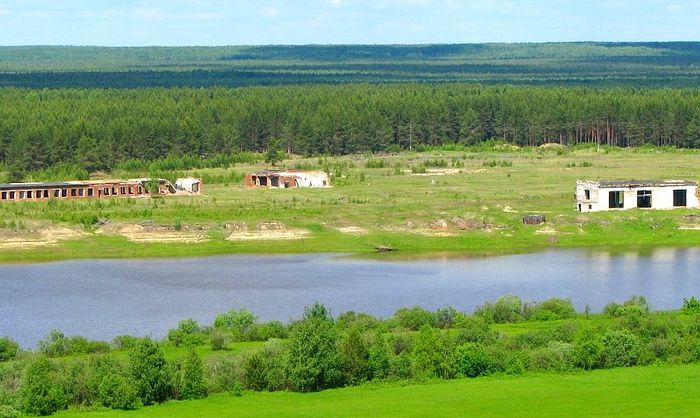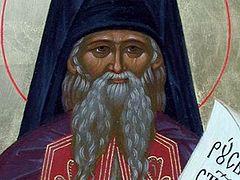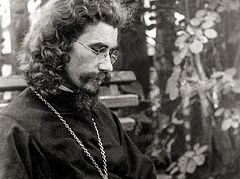During my years of work on the book, The Life of the New Martyrs Who Shone Forth in Komi,1 I had to travel widely across these severe northern lands. Apart from collecting information on the saints I sometimes chanced to meet people whose lives were so amazing that I really wanted to write them down also. I offer the reader the life story of Irina Chabanova, who is one of those people. Having passed through the meat grinder that was Stalin’s gulag, experienced hunger and sickness, and been buried alive in the village cemetery, Irina Ivanovna withstood it all and helped her friends and family get through life’s difficulties.
Family
Irina Chabanova was born in Lokchimlag (the Lokchimsk correctional-labor camp in Komi, presumably organized August 11, 1937.—N. P.), where her mother, Tatiana Ivanovna, was sent for belonging to the family of a priest. When his first child was born her father Ivan Yakovlevich, the son of a priest, hid the family icon in his newborn daughter’s pillow as a blessing on this new life. It seemed that as an infant the girl already knew what she would have to endure—she absorbed her mother’s great patience, her father’s faith, and the steadfastness of her grandfather, Priest Yakov Ivanovich, who was exiled to the tiny settlement of Pezmog for having chosen the path of service to God. But even there Fr. Yakov secretly continued his service: he preached, baptized, served funerals; and in his family the most precious things were always icons. Fr. Yakov gave his family icon to his son, Irina’s father, when the latter left for the front to lay down his life for this fatherland. His family was not able to learn about the final moments of the soldier’s life or how he died. But miraculously Irina Ivanovna saw a television program after many years, which showed a group of schoolchildren who found the remains of a soldier wrapped with an icon. The icon looked very much like the one that had been sewn into the little girl’s pillow when she was born in Lokchimlag. “Papa,” thought Irina Ivanovna. But unfortunately she only caught the last few minutes of the program, and she still doesn’t know where the unknown soldier was found.
Childhood
Irina Ivanovna would have to live through all the hardships of camp life together with her mother. As a child she had to work in the forest along with other prisoners’ children. Looking for things to do the children would ramble through the forest, and, hiding in the thick underbrush, saw much that their parents didn’t know. “We were witnesses to people’s executions,” Irina Ivanovna shared. “Mainly they were people who couldn’t work due to hunger and sickness. They took them to specially dug ditches, undressed them, removed anything of value, knocked out any gold teeth, and shot them. I still remember those terrible places were people died; there are still shoes and torn clothing scatterd around there.”
 The “Lesozavodskoe” cemetery in the village of Adjer, where the prisoners of Lokchimlag, Pezmog camp section were buried from 1938-1945.
The “Lesozavodskoe” cemetery in the village of Adjer, where the prisoners of Lokchimlag, Pezmog camp section were buried from 1938-1945. The other nightmare of life in Lokchimlag was hunger. Irina Ivanovna recalled how at times her mother was able to save her only one cabbage leaf for the whole day. In search of food the hungry children rifled through the storehouse looking to steal rotten potatoes. They were caught and cruelly punished: “Some would kick us, others would hit us in the stomach. My stomach was enlarged from hunger, I was sick with rickets,” Irina Ivanovna relates.
And one day in this world of cruelty, evil, and sadness sounded the quiet but beautiful, tender childish voice—Irina sang the prisoners’ favorite songs, which she had heard and learned during her work in the forest. The child’s voice penetrated to the hearts of those tormented people. Listening to the singing of a little girl born in Lokchimlag became the favorite occupation of the prisoners’ fleeting rest periods.
Escape
Then there was an attempted escape from the camp. “Mama and I walked at night, running for three days from the guards with dogs,” the woman relates.
In Poztykeros the priest of a local church hid the mother and child. Irina Ivanovna remembers gratefully the believers who risked their own lives to hide the woman and child… that is, children, because on the next day Irina’s brother was born. The infant was not to live even a year—he died from pneumonia. It seemed that pneumonia took the life of Irina herself. After verification of death the children were buried in the local cemetery. When the girl opened her eyes in the grave, she couldn’t understand where she was or what had happened. She only remembers that it was stifling and dark. The child made an effort to extricate herself from the tight space and scratched the coffin lid. Fortunately the grave was not deep and had been carelessly covered with earth. The noise coming from underground put a passing dog on guard. It started whining and digging up the fresh grave mound. The astounded hunter who owned the dog came to its aid and soon pulled Irina out of her “final” refuge. “I only remember how an unfamiliar elder, all gray and with such kind eyes, leaned over me,” remembers Irina Ivanovna. That is how they buried a “dead” girl in the morning and by evening she had returned to the churchyard. Seeing the resurrected Irina people ran out of the yard screaming, and after what happened her mother developed an aversion to her daughter. The woman did not believe that the girl had been in a coma…
“But they took me back into the church,” Irina Ivanova relates, “and baptized me again; then as I recall they treated me to something very sweet…” That is how Irina Chabanova remembers her last day in the priest’s house—people turned up in the village who reported that a prisoner and her daughter were hiding in the churchyard.
“They caught us and took us back to the camp,” Irina Ivanovna picks up the tragic chain of ensuing events. “Mama was sent to hard labor—carrying manure by bull-cart, during which she fell under the sledge and remained an invalid the rest of her life. I was sent to an orphanage and taken out only in ’53.”
 Irina Chabanova during her years in the Ulyanovsk agriculture school. Photo from the archive of Irina Chabanova.
Irina Chabanova during her years in the Ulyanovsk agriculture school. Photo from the archive of Irina Chabanova. Choosing her path
By that time Irina Chabanova had already decided what she wanted to be when she grew up, and entered the Ulyanov agriculture school, which was located at that time in the St. Stephen Monastery2 (now the Holy Trinity-St. Stephen-Ulyanovsk Monastery.—N. P.).
Looking at the photographs of that time, Irina Ivanovna showed me where various things were located on the territory of the former monastery: “At the foot of the hill was the cemetery were the clergy were buried. On the burial plots were stone crosses. “Kommuna” was in the former bell tower. “Bessarabia” was what they called the former monastic cells—they were filled with sheep manure. Later I and the other girls cleaned out the monastery rooms and whitewashed the walls. In general, as students of the school we always tried to treat everything that belonged to the monastery with care. We even behaved ourselves in a different manner in the former monastery—I taught them to keep peace among themselves, not to judge, and to forget evil.”
Irina’s stand
Irina Ivanovna herself followed this rule all her life. Even when she was paralyzed after a trauma and her husband left her with five children, the woman bore it all steadfastly and never became bitter. She believed that the Lord gives strength to endure new sorrows. Irina Ivanovna spent three years in difficult torments, and one day she saw the Mother of God in a dream, who said to her, “Walk.” After this dream the woman little by little began to walk around her apartment using a stool, and after a year she was able to walk independently. Then the woman had to take care of her paralyzed mother and ex-husband, who had been in an accident. Even cancer surrendered before Irina’s resoluteness. “I simply had no time to pay attention to my health, while my family was suffering around me,” she explained. And the disease left—her operation was successful.
When many sorrows fall to a person’s lot, even the smallest joys become great happiness. For Irina Ivanovna the former happiness of being able to sing remained with her—now in a veteran’s choir. Hours of cozy solitude are interspersed with clamorous joy when her children and multitudinous grandchildren come to visit, and Irina Ivanovna teaches them to always preserve peace among themselves, never to judge, and always to forget evil.





